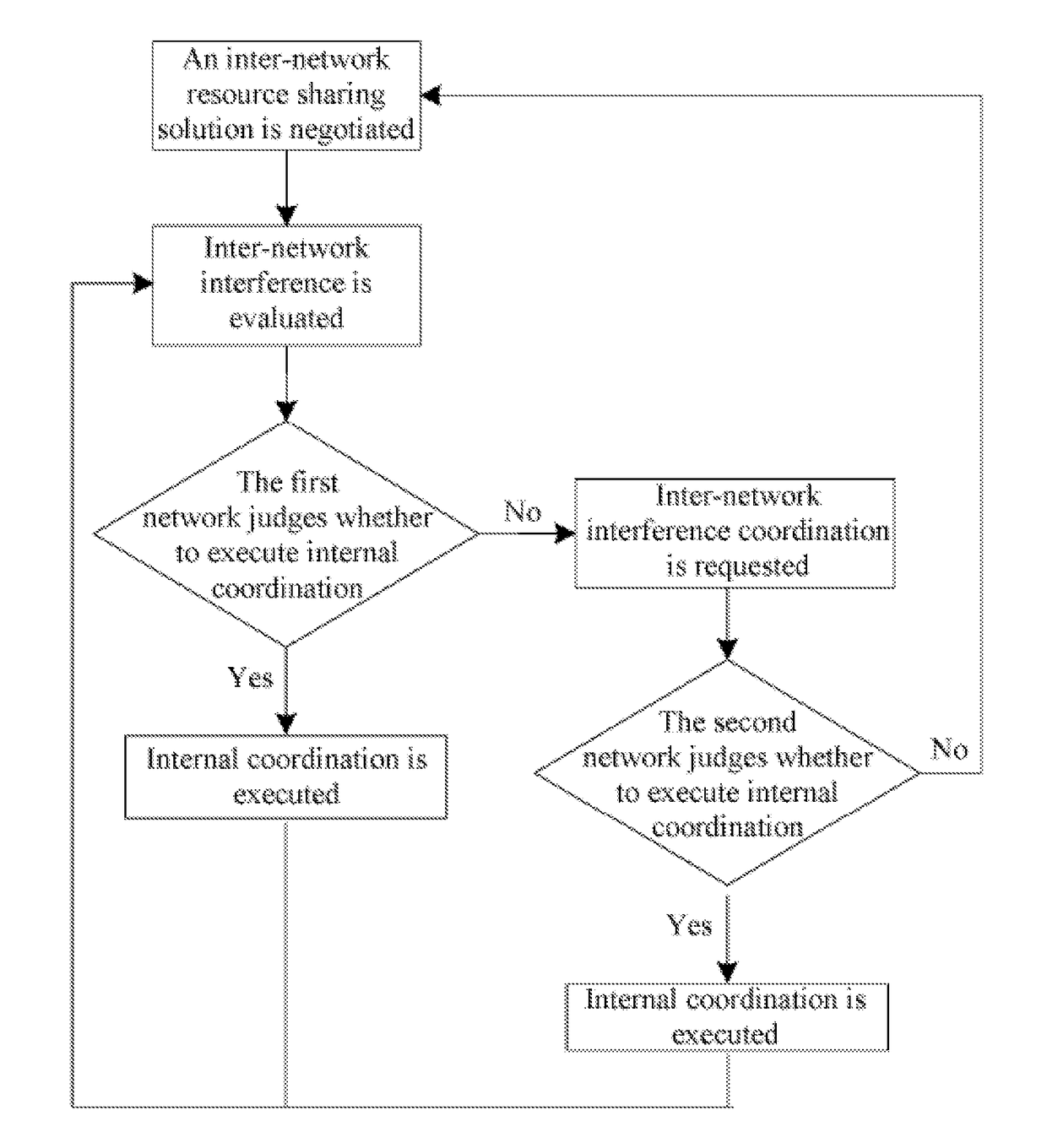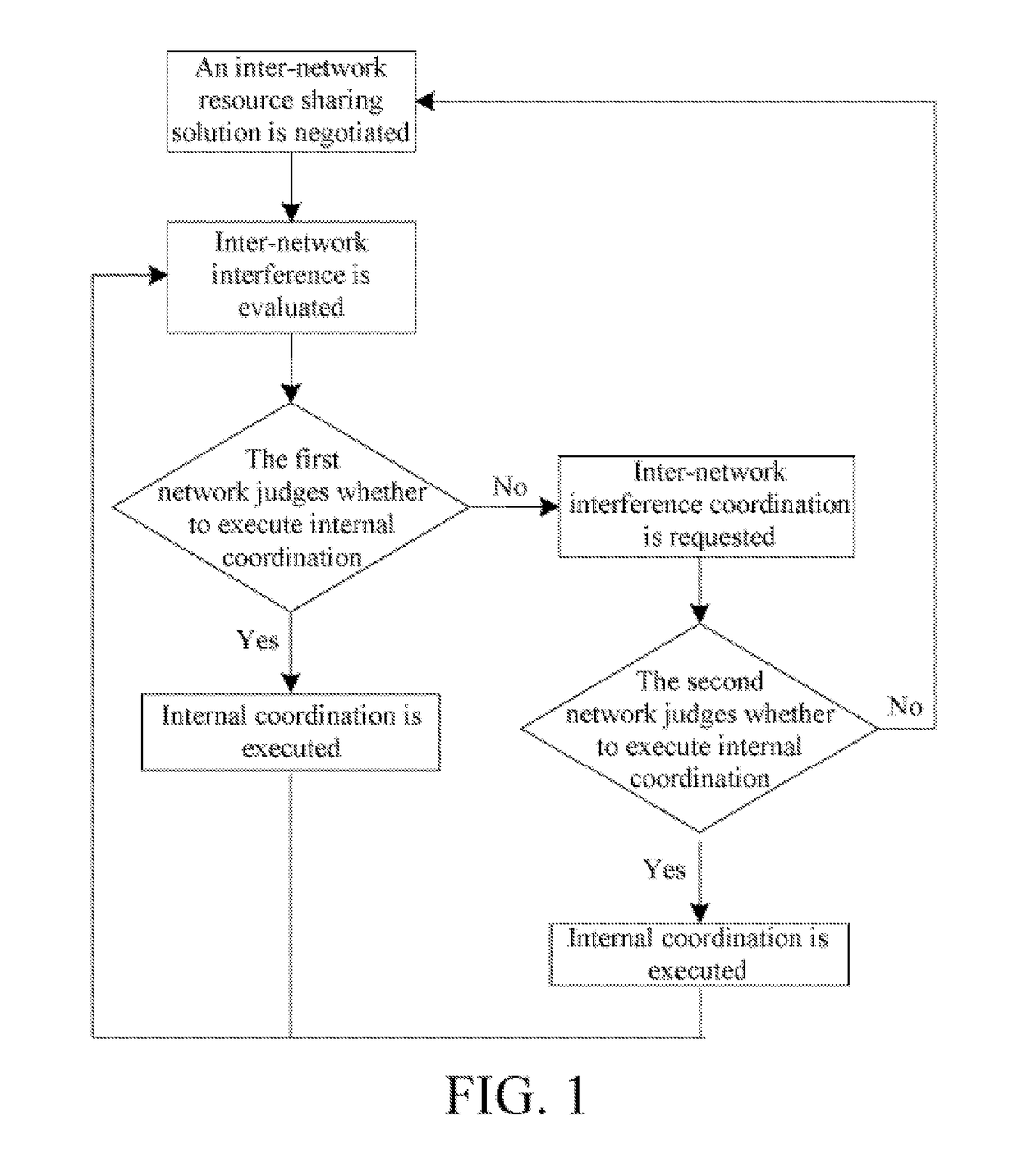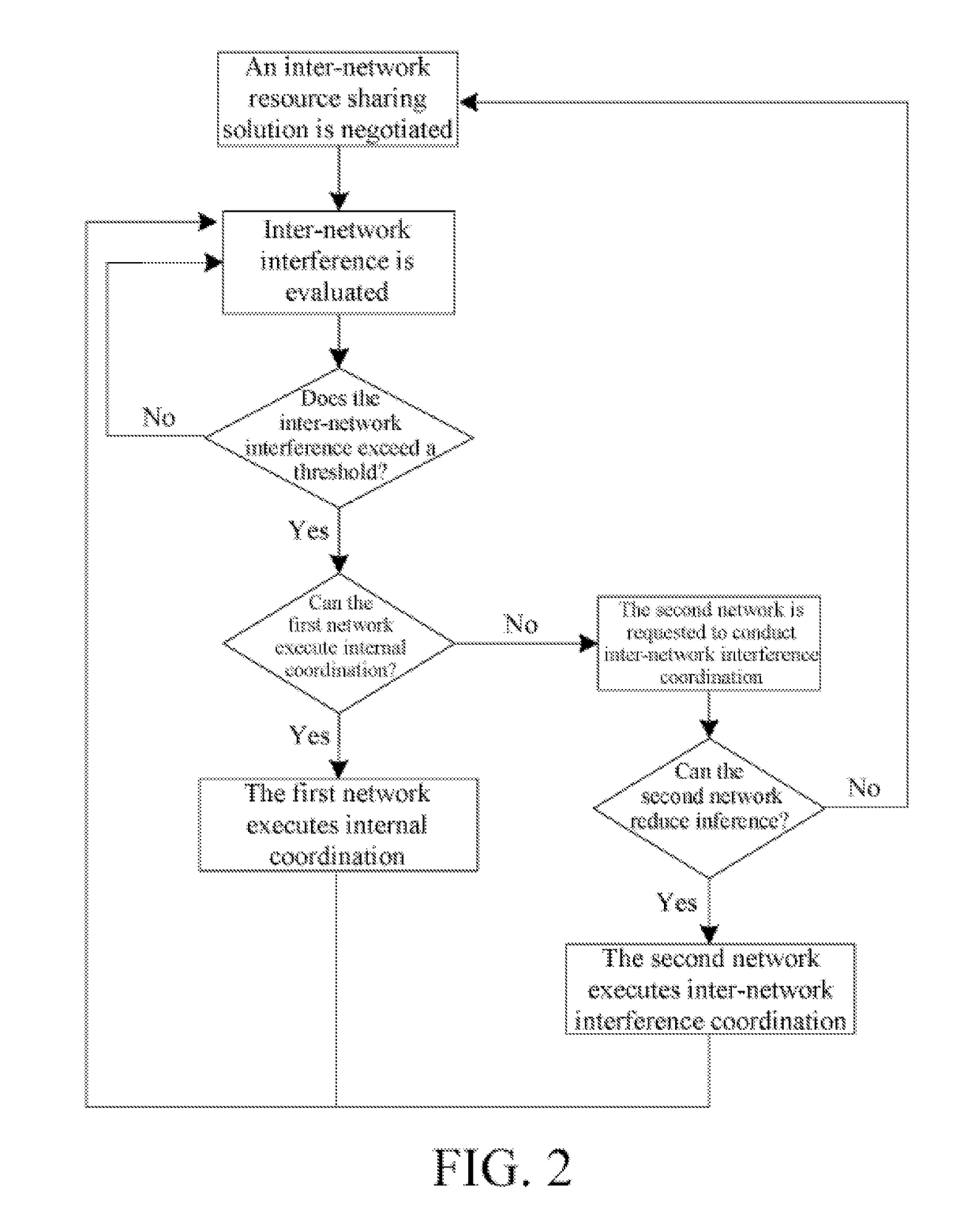Inter-network interference coordination method
a technology of inter-network interference and coordination method, which is applied in the direction of digital transmission, electrical equipment, transmission path sub-channel allocation, etc., can solve the problems of difficult sharing of detailed information about network deployment between the different operators, the power of the base station, and the loss of wireless signals through the wall, so as to achieve effective interference coordination, improve network performance, and improve the effect of interference coordination
- Summary
- Abstract
- Description
- Claims
- Application Information
AI Technical Summary
Benefits of technology
Problems solved by technology
Method used
Image
Examples
first embodiment
[0036]As shown in FIG. 1, the overall solution of the first embodiment includes the following steps:
[0037]negotiating an inter-network resource sharing solution;
[0038]evaluating inter-network interference;
[0039]the first network judging step that the first network judges whether to execute internal coordination, if it is judged that internal coordination can be executed, then the first network executes internal coordination, and then turn to the step of “evaluating inter-network interference”; if it is judged that internal coordination cannot be executed, then inter-network interference coordination is requested, and the next step is executed; and
[0040]the second network judging step that the second network judges whether to execute internal coordination, if internal coordination can be executed, then the second network executes internal coordination, and then turn to the step of “evaluating inter-network interference”; if internal coordination cannot be executed, then turn to the s...
second embodiment
[0123]In order to briefly introduce the second embodiment of the invention, only the differences of the second embodiment from the first embodiment are described.
[0124]FIG. 6 shows network-specific inter-network interference of each carrier in a shared spectrum pool of the second embodiment. Different from FIG. 4 in the first embodiment, the network-specific inter-network interference value in the second embodiment, which is is quantified and divided into high interference, medium interference and low interference, while the network-specific inter-network interference value in the first embodiment is non-quantified. The signaling format of the network-specific inter-network interference value in the second embodiment is as follows. Different from the “Signaling Content” of the first embodiment, the “Signaling Content” of the second embodiment is interference level description (quantified values).
SignalingSignalingSpecificNameRangeContentDescriptionnetwork-1-N (N is ainterferencecorr...
third embodiment
[0137]The flows in FIG. 1, FIG. 2 and FIG. 3 in the invention are event-triggered examples, and the flows in FIG. 7 and FIG. 8 are periodically triggered examples. Referring to FIG. 7 and FIG. 8, a case of periodically communicating network-specific inter-network interference information which is provided by the third embodiment is introduced below.
[0138]Under the condition that network-specific inter-network interference indication communication between operators is the periodical triggering mode, in every T time, network-specific inter-network interference indication which is generated in the previous period of measurement is communicated between the two networks.
[0139]The first network periodically sends network-specific inter-network interference indication to all the networks spectrum-sharing with the first network, including the second network. Each network spectrum-sharing with the first network judges alone which cells deployed in the network cause interference on the first ...
PUM
 Login to View More
Login to View More Abstract
Description
Claims
Application Information
 Login to View More
Login to View More - R&D
- Intellectual Property
- Life Sciences
- Materials
- Tech Scout
- Unparalleled Data Quality
- Higher Quality Content
- 60% Fewer Hallucinations
Browse by: Latest US Patents, China's latest patents, Technical Efficacy Thesaurus, Application Domain, Technology Topic, Popular Technical Reports.
© 2025 PatSnap. All rights reserved.Legal|Privacy policy|Modern Slavery Act Transparency Statement|Sitemap|About US| Contact US: help@patsnap.com



